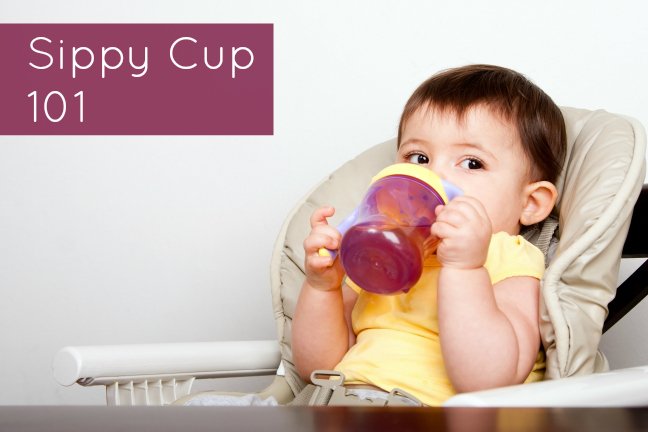Transition Your Baby to Using a Sippy Cup – Hints, Tips and Health Concerns
A key issue in transitioning your baby to a sippy cup and learning how to use a sippy cup, is the development of a good strong fist grasp and the ability to easily move things from the hand to the mouth.
Ahh, your baby has been moving items from the hand to the mouth for ages now right? Using a sippy cup requires much more than simply picking an object up and putting it into ones mouth.
How old should your baby be for introducing and/or transitioning to a sippy cup?
The question of when it is a good age to transition baby to a sippy cup and to have baby begin to use a sippy cup has many different answers. We gave our babies sippy cups from the time they started solids and had a pretty good grasp – around 6 months old. The sippy cup at that age was just to allow the babies to practice holding and moving the cup around. Getting your baby acquainted with a sippy cup is a good idea prior to transitioning your baby to using a sippy cup.
Ensure that baby plays with the cup and does not attempt to whole-heartedly “drink” from it as gas from sucking in air may occur. Our babies began to actually drink liquids from a sippy cup around 9 months of age.
What do the “experts” say about introducing and/or transitioning to a sippy cup?
The American Academy of Family Physicians notes “the sippy cup should be introduced at six months of age in preparation for weaning from the bottle or breast at 12 months” and further states that “common contributing practices that contribute to infant and toddler tooth decay include the following: propped bottles containing sweetened liquids, frequent consumption of sweetened liquids from infant and toddler-size “sippy” cups, and frequent snacking.”
The American Academy of Pediatrics states that you should “teach your child to drink from a cup as soon as possible, usually by 1 year of age. Drinking from a cup does not cause the liquid to collect around the teeth, and a cup cannot be taken to bed. If you are concerned that a cup may be messier than a bottle, especially when you are away from home, use one that has a snap-on lid with a straw or a special valve to prevent spilling.”
Visitor Tip – “As an occupational therapist who works with babies 0-3, I find that sipper cups are “glorified bottles.” I’ve had great success teaching children as young as 4-6 months of age to drink from straws- it’s good for oral-motor development, too.”
Thanks to Janis for this tip!
Tips and Tricks for introducing and/or transitioning your baby to a sippy cup
- Do NOT allow your infant or toddler to walk around the house all day with a sippy cup full of water, juice or formula. This is bad for his teeth and his appetite!
- Sippy cups are transitional devices to help baby move from a bottle to a regular cup- the AAPD discourages extended use of sippy cups.
- Do not allow your infant or toddler to “fill up” with liquid from the sippy cup. Your baby still needs the nutrients from breast milk and/or formula and sippy time should not interfere.
- Offer your baby the sippy cup as soon as baby is able to maintain a good tight grasp.
- Choose a sippy cup that is light weight and easy for tiny hands to handle. The Avent “Avent Naturally Magic” cup is one that is highly recommended by parents.
- Allow your baby to play with and explore the sippy cup – yes, even if it means baby bangs and tosses the sippy cup around.
- Encourage your baby to hold the cup with 2 hands – a sippy cup with liquid in it may be too heavy for baby to hold & maneuver with one hand.
- Show your baby how to use the sippy cup by example and help guide the sippy cup up to baby’s mouth.
- Water in the sippy cup is a great first liquid to add to the sippy cup. You may also add formula and/or breast milk. Formula and/or breast milk in a sippy cup however, may not entice your baby with the wonder and excitement of a totally new experience.
- Many parents take introducing the sippy cup as an opportunity to introduce water and juice to their infants (see our article Juice for Your Baby and ALWAYS dilute juice if you choose to offer juice)
- Offer the sippy cup during Snack time and/or between feedings.
Always consult with your pediatrician about introducing solid foods to your baby. Remember, always consult with your pediatrician regarding introducing solid foods to your baby and specifically discuss any foods that may pose allergy risks for your baby.



